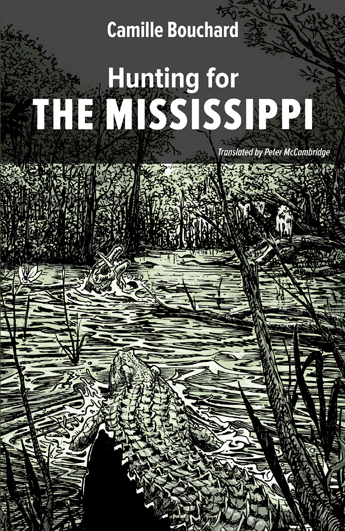| ________________
CM . . .
. Volume XXII Number 35. . . .May 13, 2016
excerpt:
History students know of the great French explorer, La Salle, who came to New France in 1666, travelled as a fur trader and explored the Mississippi River, claiming the entire river basin for France. He intended his second expedition, to establish a French colony in Louisiana, would involve a sea journey from France to New France and then an overland journey to the Mississippi, but King Louis XIV, who partially funded the trip, insisted that La Salle sail southwest across the Atlantic to the Gulf of Mexico, and on to the Mississippi mouth, while asserting France's presence in Spanish-controlled area. The four ships carried around 300 people, including six Recollect missionaries, approximately a dozen women, some children, 100 soldiers and craftsmen/artisans. The enterprise was fraught with problems. The ships landed on the coast of present-day Texas. Searches for the Mississippi delta were futile; the supply ship ran aground and was wrecked, and relations with the indigenous people were antagonistic. (In Bouchard's plot, tensions originated when one of the French murdered a native.) Over one hundred people, including soldiers, officers and skilled tradesmen returned to France on the ship, Le Joly, under Captain Beaujeu. On La Salle’s second search for the mouth of the Mississippi, divisions among the party came to a head, and he and his nephew were murdered. Meanwhile, native people attacked Fort Saint Louis and killed most of the settlers who had already been decimated by smallpox. Eventually, several survivors were found in native communities by the Spanish. Bouchard's novel is presented in the first person through Eustache Breman, who existed in real life but of whom little is known. The author, who makes Eustache 12 when the novel opens, shows his knowledge of the poverty in which many ordinary people subsisted in 17th century Europe. He selects telling details. Mrs. Breman, for instance, owns only one dress which she washes at night in the sea. Her sons sing for hand-outs. The priest grabs her breasts and says, "If you're looking for money, Delphine, leave the two kids here and come into the sacristy with me." No wonder that, after the death of Eustache's younger brother, the remaining two Bremans jump at the chance to become colonists in Louisiana. Their neighbours, the Talons, are enthusiastic. Mr. Talon, who once lived in cold New France, welcomes life in warm Louisiana. Eustache also wants to go because he loves 10-year-old Marie-Elisabeth Talon, whom he hopes to marry someday. And, as Mrs. Talon tells Eustache's mother: "You'll be able to eat every day." The voyage scenes introduce readers to (real-life) characters who were at odds with La Salle and his associates. Several resented his privileged social status. Eustache and his family and friends are loyal to their leader, and Eustache is thrilled to become one of his messenger boys. The men who later kill La Salle and his nephew are depicted as surly thugs. Bouchard provides vivid details of life aboard ship for three months, with animals, including human ones. The key incident is a horrific one with major implications for the plot: Marie-Elisabeth is raped by a German freebooter, Hiens. We are told later that 12 was considered a marriageable age for girls in the 1680s, but Marie-Elisabeth is only 10, and by present-day standards, a mere child. Bouchard frankly presents the widespread male contempt for women of all ages typical of that era. Eustache wants to report Hiens' crime to someone, but to whom? If he tells, what if Hiens and his brutal associates retaliate against the entire Talon family as well as himself? Hiens, indeed, threatens harm to the Talon family to force Marie-Elisabeth to continue giving in to him, a situation which brings predictable consequences and causes Eustache great grief and anger. His heart becomes "bone dry...All that remains is an urge to kill." Readers will keep turning the pages to find out if the dissension among the leaders results in bloodshed, and if Eustache will punish Hiens for abusing Marie-Elisabeth. Camille Bouchard is a master of the cliff-hanger chapter ending. Unfortunately, the very last chapter also ends with a cliff-hanger. Bouchard shows Eustache at a moment of immense grief and imminent danger, and then the screen goes blank. In an afterword, "What Happened Next?", the author gives a brief summary of historic facts drawn from Captain Beaujeu's report to the king, Henry Joutel's travel diary, and the writings of the Recollect priests. The chopped-off ending is a huge disappointment to readers who have enjoyed the action and want some clearer kind of closure. In his afterword, "About the Historical Characters", the author informs readers that in 1691 a Spanish party found young Jean-Baptiste Talon and Eustache Breman living with a native community and freed them. After going to the trouble to create such a compelling story for Eustache, the author could have written a final chapter showing (rather than summarizing) the two boys being found by the Spaniards. The book is only 208 pages long. A mentor of mine, a children's writer, held that young people need hopeful endings, if not happy ones. The abrupt termination of Hunting for the Mississippi, which leaves readers hanging and imagining the worst, mars what is otherwise a sophisticated, compelling novel. Recommended. Ruth Latta's most recent young adult novel, Grace and the Secret Vault, is in the hands of a publisher. For more information about her work, please visit http://ruthlattabooks.blogspot.ca
To comment on this title or this review, send mail to cm@umanitoba.ca.
Copyright © the Manitoba Library Association. Reproduction for personal use is permitted only if this copyright notice is maintained. Any
other reproduction is prohibited without permission.
CM Home |
Next Review |
Table of Contents for This Issue -May 13, 2016
| Back Issues | Search | CM Archive
| Profiles Archive |
